Serving 660 students in grades Kindergarten-6, James Monroe Elementary School ranks in the bottom 50% of all schools in California for overall test scores (math proficiency is bottom 50%, and reading proficiency is bottom 50%).
The percentage of students achieving proficiency in math is 23% (which is lower than the California state average of 33%). The percentage of students achieving proficiency in reading/language arts is 33% (which is lower than the California state average of 47%).
The student:teacher ratio of 24:1 is higher than the California state level of 21:1.
Minority enrollment is 98% of the student body (majority Hispanic), which is higher than the California state average of 80% (majority Hispanic).
Quick Stats (2025)
- Grades: Kindergarten-6
- Enrollment: 660 students
- Student:Teacher Ratio: 24:1
- Minority Enrollment: 98%
- Overall Testing Rank: Bottom 50% in CA
- Math Proficiency: 23% (Btm 50%)
- Reading Proficiency: 33% (Btm 50%)
- Science Proficiency: 20-24% (Btm 50%)
- Source: National Center for Education Statistics (NCES), CA Dept. of Education
Top Rankings
James Monroe Elementary School ranks among the top 20% of public schools in California for:
Category
Attribute
Percent Eligible For Free Lunch
School Overview
James Monroe Elementary School's student population of 660 students has declined by 5% over five school years.
The teacher population of 27 teachers has stayed relatively flat over five school years.
Grades Offered
Grades Kindergarten-6
Total Students
660 students
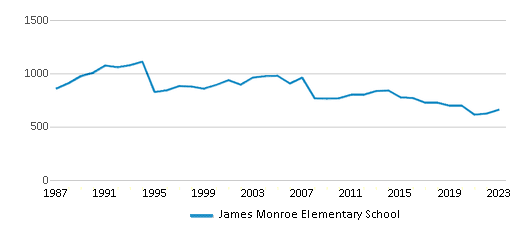
Gender %

Total Classroom Teachers
27 teachers
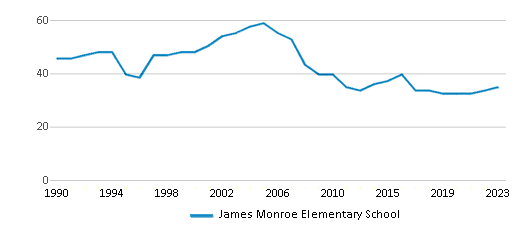
Students by Grade
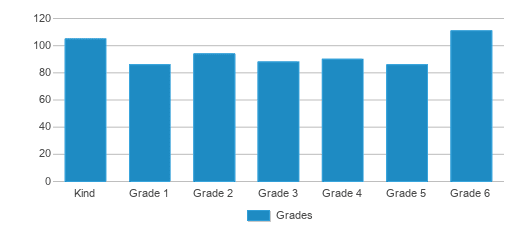
School Calendar
School Rankings
James Monroe Elementary School ranks within the bottom 50% of all 9,602 schools in California (based off of combined math and reading proficiency testing data).
The diversity score of James Monroe Elementary School is 0.08, which is less than the diversity score at state average of 0.63. The school's diversity has stayed relatively flat over five school years.
Overall Testing Rank
#5948 out of 9602 schools
(Bottom 50%)
(Bottom 50%)
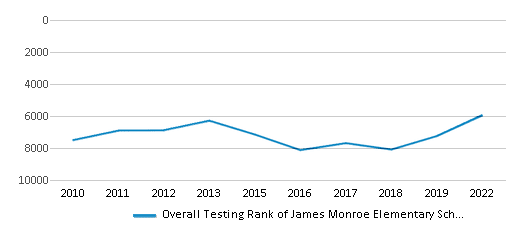
Math Test Scores (% Proficient)
23%
33%
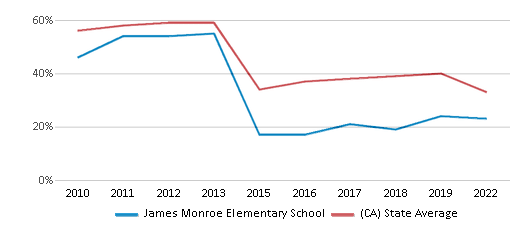
Reading/Language Arts Test Scores (% Proficient)
33%
47%
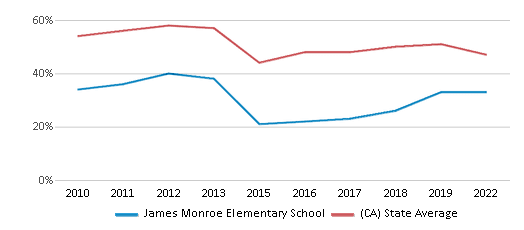
Science Test Scores (% Proficient)
20-24%
29%
Student : Teacher Ratio
24:1
21:1
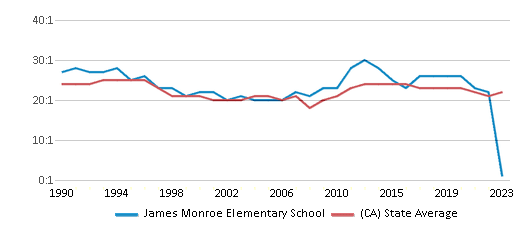
American Indian
1%
1%
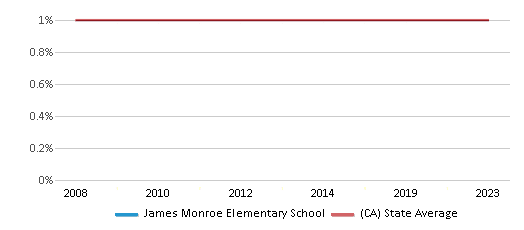
Asian
n/a
12%
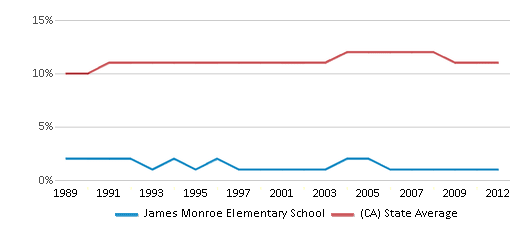
Hispanic
96%
56%
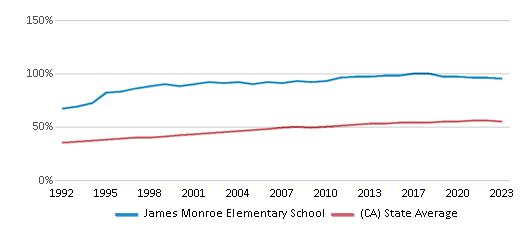
Black
1%
5%

White
2%
20%
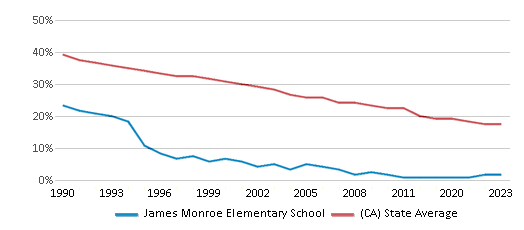
Hawaiian
n/a
n/a
Two or more races
n/a
6%
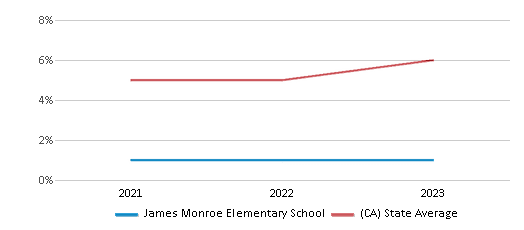
All Ethnic Groups
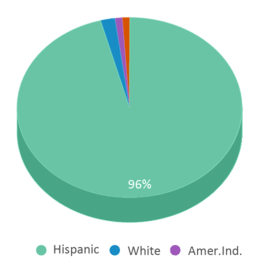
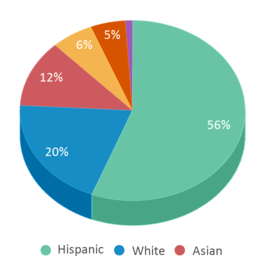
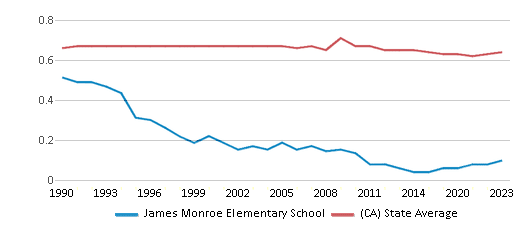
Eligible for Free Lunch
96%
54%
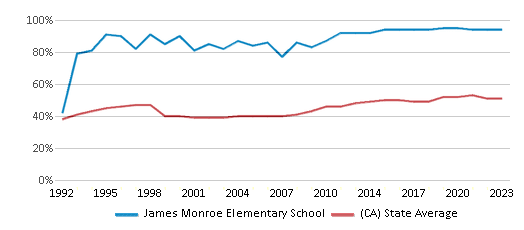
Eligible for Reduced Lunch
2%
8%
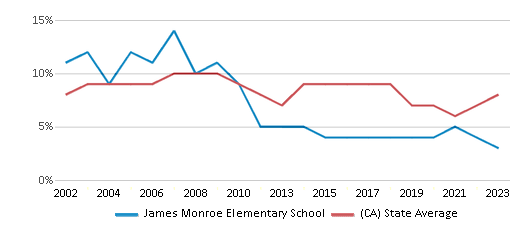
School Statewide Testing
School District Name
Source: National Center for Education Statistics (NCES), CA Dept. of Education
Profile last updated: 02/09/2025
Frequently Asked Questions
What is James Monroe Elementary School's ranking?
James Monroe Elementary School is ranked #5948 out of 9,602 schools, which ranks it among the bottom 50% of public schools in California.
What percent of students have achieved state testing proficiency in math and reading?
23% of students have achieved math proficiency (compared to the 33% CA state average), while 33% of students have achieved reading proficiency (compared to the 47% CA state average).
How many students attend James Monroe Elementary School?
660 students attend James Monroe Elementary School.
What is the racial composition of the student body?
96% of James Monroe Elementary School students are Hispanic, 2% of students are White, 1% of students are American Indian, and 1% of students are Black.
What is the student:teacher ratio of James Monroe Elementary School?
James Monroe Elementary School has a student ration of 24:1, which is higher than the California state average of 21:1.
What grades does James Monroe Elementary School offer ?
James Monroe Elementary School offers enrollment in grades Kindergarten-6
What school district is James Monroe Elementary School part of?
James Monroe Elementary School is part of Madera Unified School District.
School Reviews
5 4/9/2022
Super good school!!!
1 10/6/2021
I hate it. Here's why my daughter has been recently getting bullied and I've talked to the teachers, the principal and they did nothing but just to ignore me. My daughter has been so bullied that she locks herself in her room and she simply ignores me because she thinks I do nothing about it. I had to do something, and I changed schools. Now she goes to John Pershing elementary school, and she loves. It, this school has many excellent reviews and I think this school is perfect for my daughter. This school is full of amazing and kind people. I just want to thank all the teachers and co ulcers that helped my daughter have her best times in John Pershing elementary school.
Review James Monroe Elementary School. Reviews should be a few sentences in length. Please include any comments on:
- Quality of academic programs, teachers, and facilities
- Availability of music, art, sports and other extracurricular activities
Recent Articles

What Is A Charter School?
Explore the world of charter schools in this comprehensive guide. Learn about their history, how they operate, and the pros and cons of this educational innovation. Discover key facts about charter schools, including admission policies, demographics, and funding, as well as what to look for when considering a charter school for your child.

10 Reasons Why High School Sports Benefit Students
Discover the 10 compelling reasons why high school sports are beneficial for students. This comprehensive article explores how athletics enhance academic performance, foster personal growth, and develop crucial life skills. From improved fitness and time management to leadership development and community representation, learn why participating in high school sports can be a game-changer for students' overall success and well-being.

February 05, 2025
Understanding the U.S. Department of Education: Structure, Impact, and EvolutionWe explore how the Department of Education shapes American education, from its cabinet-level leadership to its impact on millions of students, written for general audiences seeking clarity on this vital institution.





